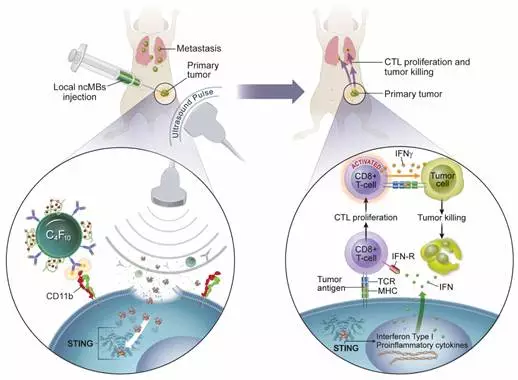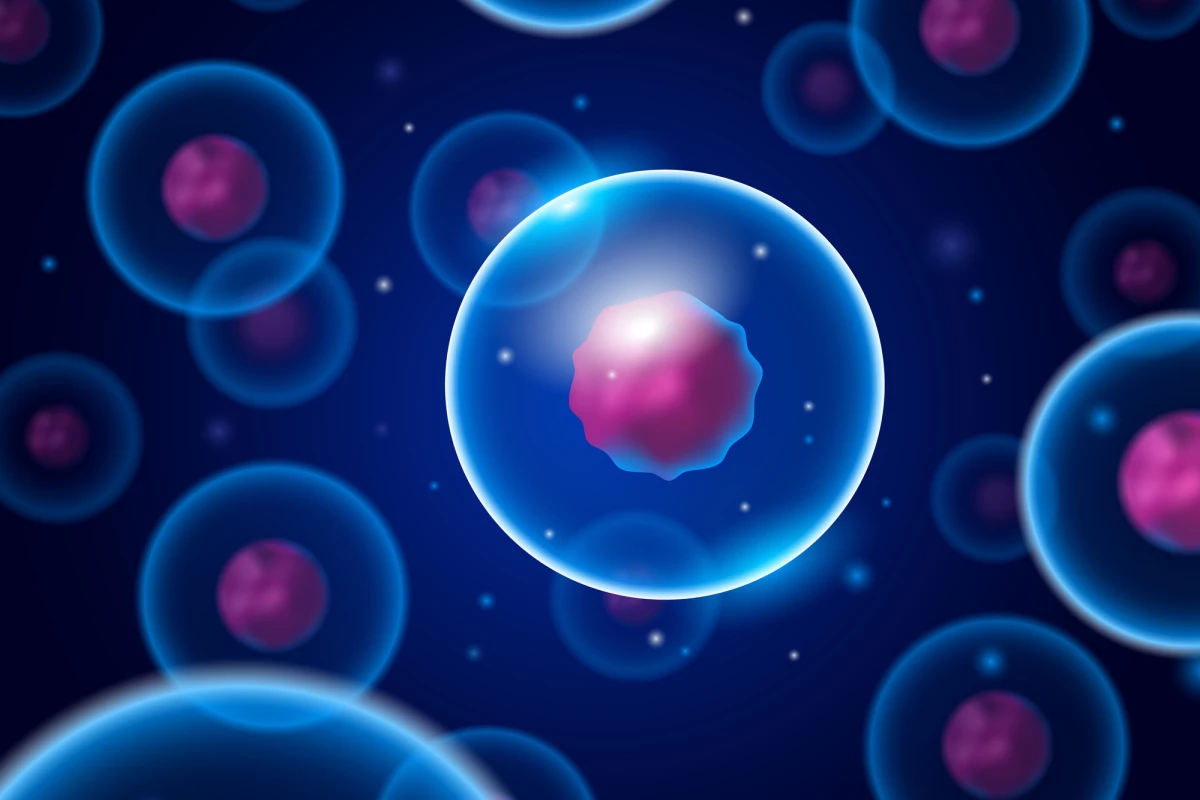Microbubbles and ultrasound might seem like an odd couple, but recently we've seen these two forces combine to great effect in the world of medicine. A newly developed treatment makes use of these tools to deliver immunotherapy drugs with great potency, significantly reducing tumor growth in mouse models of breast cancer.
Developed by scientists at the University of Texas Southwestern, the new technique is dubbed Microbubble-assisted Ultrasound-guided Immunotherapy of Cancer (MUSIC), and adds to a growing list of exciting technologies in this space. These include using microbubbles to supercharge ultrasound for clearer imaging of the heart, deploying them to pry open the blood-brain barrier and deliver Alzheimer's drugs, or bringing lasers into the mix to pulverize arterial plaque.
We're also seeing promising advances in the context of cancer treatment. One approach involves injecting tiny gas-filled bubbles into tumors and using ultrasound to explode them, causing mechanical stress that takes out cancerous cells. Another targets tissues with ultrasound waves to generate tiny bubbles from the outside, which could prove particularly useful in treating hard-to-reach tumors.
The creators of the MUSIC technique describe it as a first-of-its-kind, and a point of difference is that it's designed to deliver drugs rather than kill cancer cells with violent disruptions. That's not to to say mechanical stress doesn't play a part, however, with the ultrasound waves used to forge small openings in cell membranes for drugs to enter, as study co-author Jacques Lux explains.
“When exposed to an ultrasound field, the microbubbles oscillate," he said. "If those microbubbles are bound to cells when exposed to a high enough ultrasound intensity, the oscillation will push and pull the cell membrane. This creates pores that open the door for delivery of microbubble cargo into the cells’ cytosol."
The team's system consists of microbubbles loaded up with the cyclic dinucleotide cGAMP, which is a natural agent that triggers an enhanced immune response to tumors by activating a pathway known as cGAS-STING. Delivery methods for cGAMP have been hampered by poor stability and entry rates into the cell, but the team believes it has addressed these issues with its novel platform.
The microbubbles also carry antibodies that help them specifically target certain immune cells called antigen-presenting cells (APCs). Due the ultrasound-induced oscillation of the cell membrane, cGAMP is able to more effectively infiltrate the APCs and activate the cGAS-STING pathway. This in turn primes immune T-cells for attack, which then target and eliminate the tumor cells.
This is the first time scientists have been able to deliver cGAMP directly into APCs, and in experiments of triple-negative breast cancer in mouse models the technique was found to significantly reduce tumor growth. Sixty percent of the treated mice experienced complete tumor eradication, while the technique also generated anti-tumor memory in the T-cells that helped prevent recurrence of the tumors.

In separate experiments on mouse models of metastatic breast cancer, the team found the technique could be targeted to primary tumors and activate a powerful T-cell response, which saw the cells travel great distances to tackle cancer lesions in different parts of the body. Adding a common immunotherapy drug to the mix in the form of a PD-1 blocker prevented progression of the disease even further. This combination therapy produced a 76 percent greater median survival rate than the PD-1 blocker alone.
“We injected our microbubbles in the primary tumor, applied ultrasound, and found that the metastatic tumors – like tumors located in the lungs – were disappearing,” said Lux.
Working in the team's favor as it eyes clinical deployment of the technology is that microbubbles are already commonly used as a contrasting agent in ultrasound imaging. The MUSIC technique also appears to have low toxicity, and the scientists believe its highly-targeted nature can help avoid some of the widespread inflammation associated with other cGAMP delivery methods.
“Ultrasound scanners are more affordable than other imaging modalities and are present in all hospital settings within the United States," said Lux. "Having a relatively inexpensive, image-guided therapeutic available to improve treatment of cancer patients would be exciting."
The research was published in the journal Nature Nanotechnology.
Source: University of Texas Southwestern




